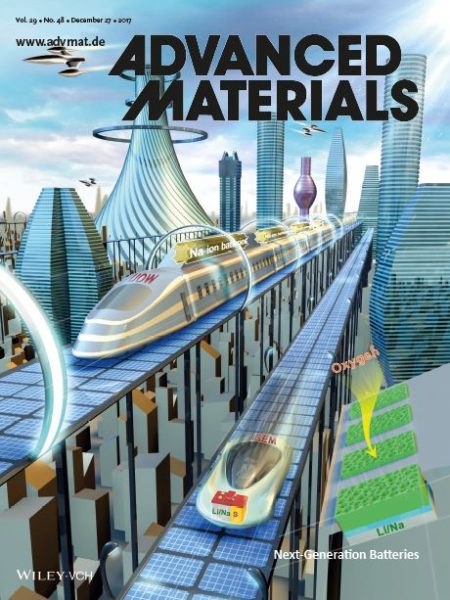
Next-Generation Batteries Special Issue
Development of battery technologies is never out of the forefront of the development of research in advanced materials. As well as the well-studied lithium-ion battery, sodium-ion batteries are also in development, along with lithium–oxygen batteries, sodium–oxygen batteries, aluminum-ion batteries, flow batteries, and others. In addition, supercapacitors and solid-oxide fuel cells are also important areas of energy-storage research.
All these battery types were considered and discussed in a special issue of Advanced Materials on next-generation batteries, which is revisited here.
From the materials point of view, the issue covers different materials, designs, configurations, and morphologies, such as 2D materials, porous materials, and 3D nanostructures. Different kinds of active materials and electrolyte materials, from inorganic materials to organic materials, are also reviewed for battery applications.
A summary of the highlighted and reviewed topics follows:
- Anionic redox for high-capacity cathode materials;
- High-energy anode materials for Li-ion batteries;
- Organic redox compounds as electrode materials for renewable, environmentally benign energy applications;
- The status and prospects of Li–S batteries: electrolytes and anode and cathode;
- Alloy-based anode materials, NASICON-based electrode materials, and metal sulfides/selenides for next-generation Na-ion batteries;
- Metal–oxygen batteries with higher energy density;
- The role of defects for oxygen electrocatalysis;
- Strategies toward high capacity and good cycling stability of Al-ion batteries;
- Materials and related key components for solid-oxide fuel cells (SOFCs) operating below 500 °C;
- The design of 3D binder-free nanoarchitectures for pseudocapacitors.
All in all, the field is continually advancing but the issue provides a snapshot of developments over the last few years across many of the battery types currently under study.

















